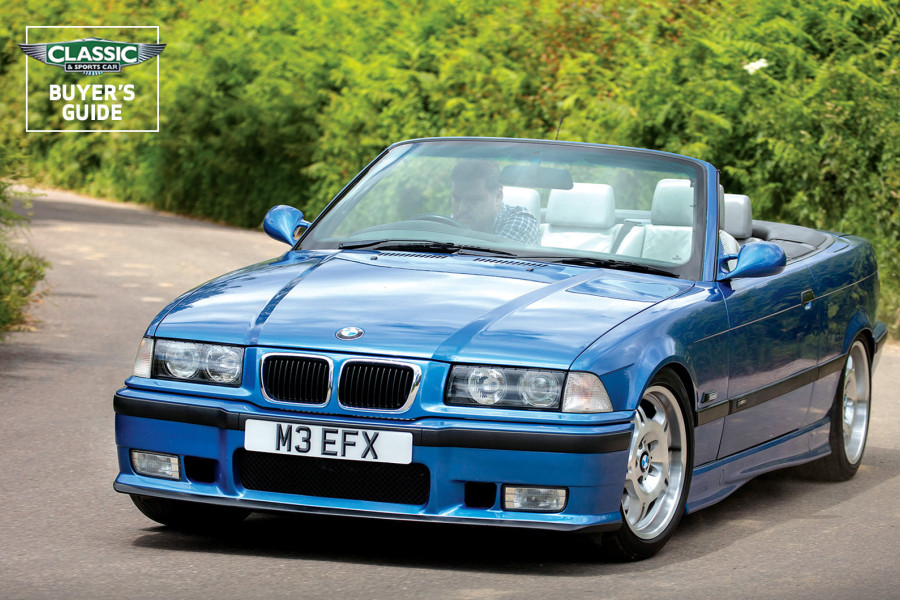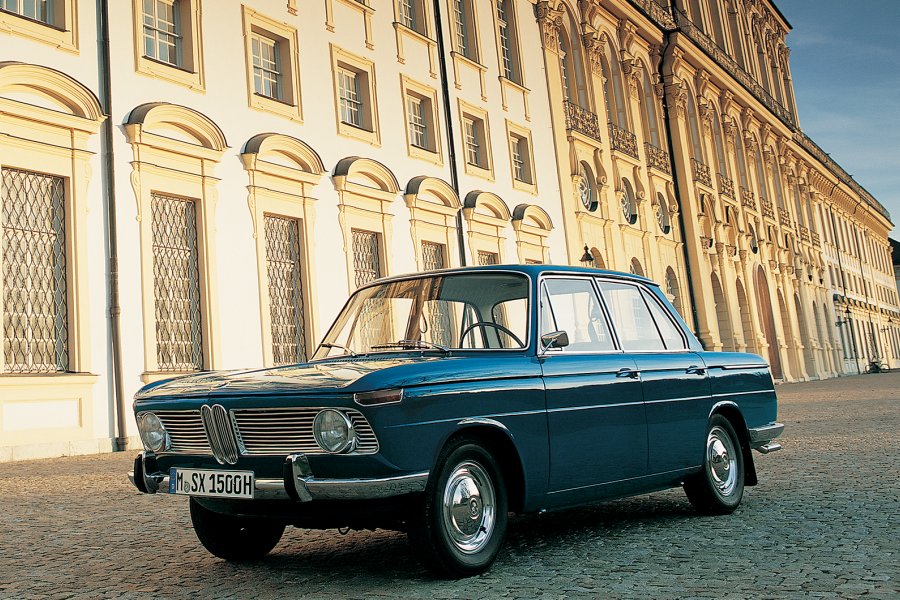The same smooth, forgiving drivetrain, the same superb all-round views and balanced controls where nothing fights you, and nothing is too light or too heavy.
If anything the driving position in the CSL is even better, and, once you have levered yourself in, those bolstered Scheel buckets are superb.
The CSL’s tail styling is sleeker than the upright ’02 – and cleaner in non-‘Batmobile’ trim with no rear spoiler
There are four clearly presented instruments to the 2002’s three. Wood and chrome – on the dash, flowing into the door trims – feature prominently where the smaller car makes do with high-quality plastic, presumably to remind you that this was a hand-finished body.
Pedal positions and switchgear are much the same and, despite the CSL’s greater length, there is not a lot between them when it comes to rear legroom.
The CSL’s distinctive ignition key (a drilled blade) and noisy, lethargic electric windows were shared with all species of these big coupés.
After a brief whir from fuel pump, as the high-pressure injection comes to life, the straight-six fires almost instantly.
The purposeful CSL carries aggressive undertones with subtlety
Beautifully smooth and flexible, it bestows suave yet athletic acceleration upon the CSL, squatting the big two-door down on its rear springs as it takes off.
The low, slightly noisy first takes you to 40mph, and you are well on the way to 70mph in second before it’s time to snatch the 100mph third.
The rev-counter needle surges around the dial and, while the power should tail off beyond 5500rpm, it feels as if it’s getting stronger, so sweetly is the urge delivered.
The BMW 3.0 CSL’s angular profile is accentuated by the sharknose
The expensive, sonorous howl that comes with all this has a thrilling urgency that encourages gear play in the four-speed ’box.
It feels nearly as slick as the one in the 2002, although you can just occasionally catch out the synchromesh if you try and grab a change.
On its doughnut-like Michelin XWX tyres the CSL covers the ground effortlessly, a relatively narrow and compact car by modern standards with a firm and confident command of the road that belies its near-50 years.
It is very stable and refined (as long as you don’t expect miracles of the wind-noise-generating seals on the frameless windows), with firm but not teeth-rattling damping.
Cars like these won many over to the BMW brand
It has an ability to change direction cleanly and crisply that does not come at the expense of twitchiness, either.
Set up for a long, fast corner it holds its line superbly. On slower ones you can feel the limited-slip differential working but soon forget the CSL has power steering, as the perfectly sized sports wheel castors smoothly back through your fingers.
You could view the CSL as the final flourish in BMW’s most creative period of early 1970s image-making; a powerful finale to a period of public seduction that the 2002 had instigated.
What is for sure is that these defining cars from Munich were perfect exemplars for the much-underestimated art of making a really good plan. And sticking to it.
Images: Luc Lacey
Thanks to The Hairpin Company
Factfiles
BMW 3.0 CSL
- Sold/number built 1971-’74/1208
- Construction steel monocoque with aluminium doors, bonnet and bootlid
- Engine iron-block, alloy-head, sohc 3003cc ‘six’,with Bosch D-Jetronic fuel injection
- Max power 197bhp @ 5500rpm
- Max torque 200lb ft @ 4300rpm
- Transmission Getrag four-speed manual, driving rear wheels
- Suspension independent, at front by MacPherson struts rear semi-trailing arms, coils, telescopic dampers; anti-roll bar f/r
- Steering power-assisted ZF-Gemmer worm and roller
- Brakes ventilated discs, with servo
- Length 15ft 3¼in (4655mm)
- Width 5ft 5¾in (1670mm)
- Height 4ft 6in (1372mm)
- Wheelbase 8ft 7½in (2630mm)
- Weight 2800lb (1270kg)
- 0-60mph 7.3 secs
- Top speed 133mph
- Mpg 17
- Price new £7399
- Price now £100-180,000*
BMW 2002
- Sold/number built 1968-’76/339,084 (all carburetted 2002s)
- Construction steel monocoque
- Engine iron-block, alloy-head, sohc 1990cc ‘four’,with Solex 40PDSI carburettor
- Max power 98bhp @ 5500rpm
- Max torque 116lb ft @ 3000rpm
- Transmission four-speed manual, driving rear wheels
- Suspension independent, at front by MacPherson struts rear semi-trailing arms, coil springs, telescopic dampers; anti-roll bar f/r
- Steering ZF worm and roller
- Brakes discs front, drums rear, twin servos
- Length 14ft 2in (4318mm)
- Width 5ft 2½in (1588mm)
- Height 4ft 7in (1410mm)
- Wheelbase 8ft 2½in (2500mm)
- Weight 2312lb (1054kg)
- 0-60mph 10.8 secs
- Top speed 107mph
- Mpg 28
- Price new £2649
- Price now £15-35,000*
*Prices correct at date of original publication
READ MORE
A question of taste: BMW 635CSi vs Jaguar XJ-S vs Bitter SC
Daring to be different: Lotus Elan M100 vs BMW Z1
Out for the Count: Michelotti’s BMW 507
Martin Buckley
Senior Contributor, Classic & Sports Car




























